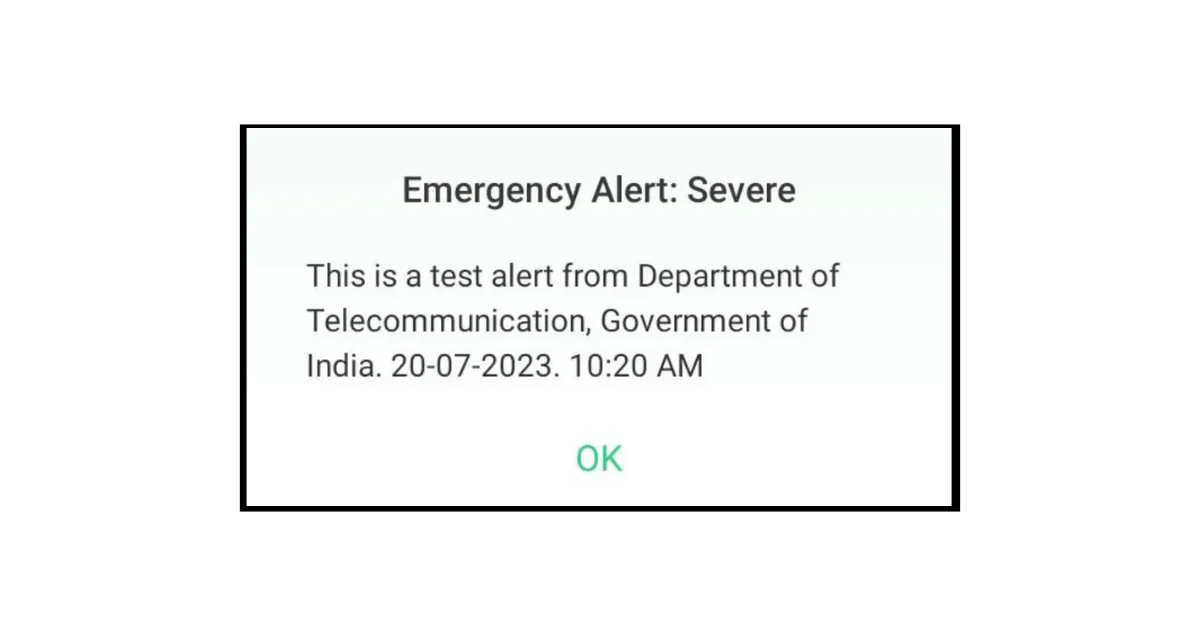Emergency Alert Severe: In the digital age, communication has become quicker and more efficient. Today, we have instant access to information and important alerts right at our fingertips. However, on a seemingly ordinary morning at 10.20 am, an unexpected emergency alert caused a stir among the people of India. In this article, we will delve into the details of the “Emergency Alert Sever” message that left many individuals shocked and fearful.
Emergency Alert Severe

The “Emergency Alert Severe” message was sent to all mobile phones in India by the Government of India and Telecommunication. The message was accompanied by a voice notification, which further intensified the impact. As the message reached people’s phones, loud alert sounds rang out, even on devices that were set to silent mode, making it impossible to ignore.
The Purpose of the Test Message
Upon receiving the alarming message, citizens were taken aback and started questioning its authenticity and purpose. However, it was later revealed that this message was simply a test alert from the Department of Telecommunication, Government of India. The primary objective was to assess the efficiency of simultaneously informing the Indian public in times of emergencies.
Clarifying Misconceptions
Given the unexpected nature of the message, fear and uncertainty spread among the public. To dispel any confusion and panic, the Government clarified that the “Emergency Alert Severe” message was only a test and not a cause for alarm. It was an initiative to evaluate the effectiveness of timely communication during emergencies.
What Happens When the OK Button is Pressed?
One of the pressing questions raised by the public was regarding the consequences of pressing the “OK” button on the message. Upon clicking the button, the alert sound did not stop immediately. However, there was no need for concern, as a subsequent message was received, stating, “Emergency Alerts On. Continue to receive emergency alerts?” By choosing to continue, users could ensure they receive disaster alerts from the Government of India.
The Multilingual Approach
Following the initial testing phase, the message was re-sent at 10.31 am, this time in various languages spoken across all states. This step was taken to ensure that people from different regions could comprehend the message in their preferred language.
Conclusion
In conclusion, the “Emergency Alert Severe” message that caused a momentary panic among the Indian public was, in fact, a well-intentioned test conducted by the Government of India. It aimed to gauge the effectiveness of emergency communication systems in the country. The subsequent messages clarified any doubts about the “OK” button and reassured citizens that there was no need to fear the test alerts.
FAQs
Is the “Emergency Alert Sever” message a genuine emergency alert?
No, the message was a test alert conducted by the Government of India to assess emergency communication systems.
Will clicking the “OK” button on the message hack my mobile?
No, clicking “OK” will prompt another message, seeking your consent to receive future emergency alerts.
What was the purpose of sending the message in different languages?
The message was sent in multiple languages to ensure understanding among people from diverse linguistic backgrounds.
Are there any plans for a real emergency alert system in the future?
While there’s no official confirmation yet, the test likely aimed to pave the way for a more effective emergency alert system in the future.
Should I be worried about similar messages in the future?
No, future messages of this nature are likely to be tests or genuine alerts aimed at safeguarding the public during emergencies.
